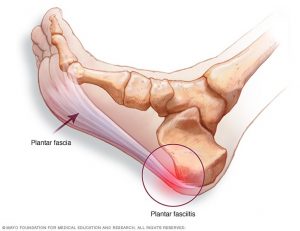Plantar Fasciitis:
Heel pain is a common runner’s complaint and can affect both elite and age group athletes…. As a physiotherapist it is a challenging condition to treat. Typically it is a reoccurring condition, especially in athletes who don’t like to take time off running. Most importantly it is important to off load the foot and treat it by identifying what caused it or is triggering it and eliminate it. The sooner you sort it the quicker you will return to pain free sport.
What is it?
 [wdi_feed id=”1″]
[wdi_feed id=”1″]
Plantar Fasciitis is the medical term for a thickening changing structure of the plantar fascia. The plantar facia is a thick band of flexible but tough tissue that runs under the sole of he foot, connecting the heel bone to the smaller bone of the foot. It helps with shock absorption and stabilising the arch of the foot. Thus the symptoms are associated with standing, walking and running, much worse first thing in the morning, and after a period of unloading of the facia
The inflammation or injury can occur suddenly with acute tear/ or rupture or over months, with small micro tearing over time. This causes a thickening and a decreasing ability to absorb and transfer load.
What are the contributing factors?
Poor lower limb and foot biomechanics and/or poor strength/ conditioning of the lower limb and foot
Change or alteration in foot wear, wearing ill fitting or the wrong type of shoe
Changes in training- rapid increase in volume, increased speed work, running fatigued
Changes in running terrain- i.e. hard cement, unforgiving ground if used to grass or trails
Tightness in calf and Achilles complex with lack of foot and ankle mobility
How to treat it?
It is important to identify what is contributing to it?
Professionally based on the severity of it how do we off load it? Boot/ aircast? Strasbourg sock at night? But none the less runners need to stop running until morning pain eases. Temporary measures to strap the arch, which might lead to temporary or permenant orthotics.
It is important while it is healing that the athlete addresses the faulty foot/ leg biomechanics, and tuck into the strengthening, stretching and conditioning program to address the contributing factors. When things settle enough and you can resume running it needs to be done slowly and gradually based on the 24 response to impact loading.
Thankfully with triathlon you can still bike and swim to keep yourself sane!

Leave a Comments
You must be logged in to post a comment.